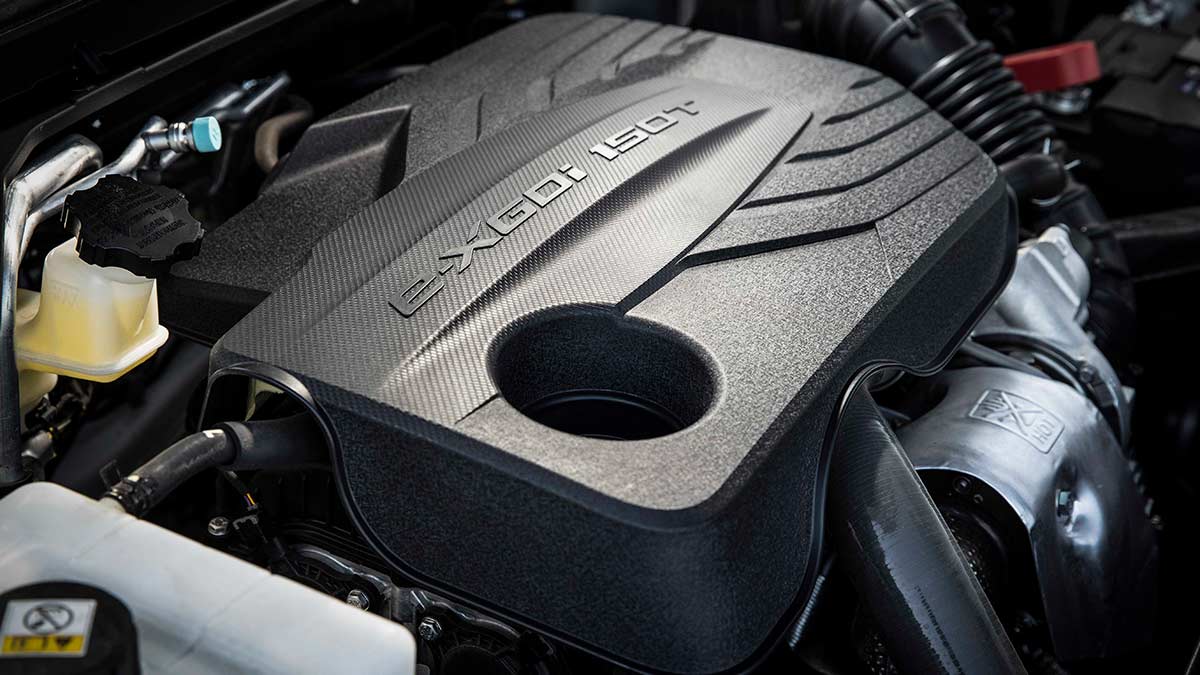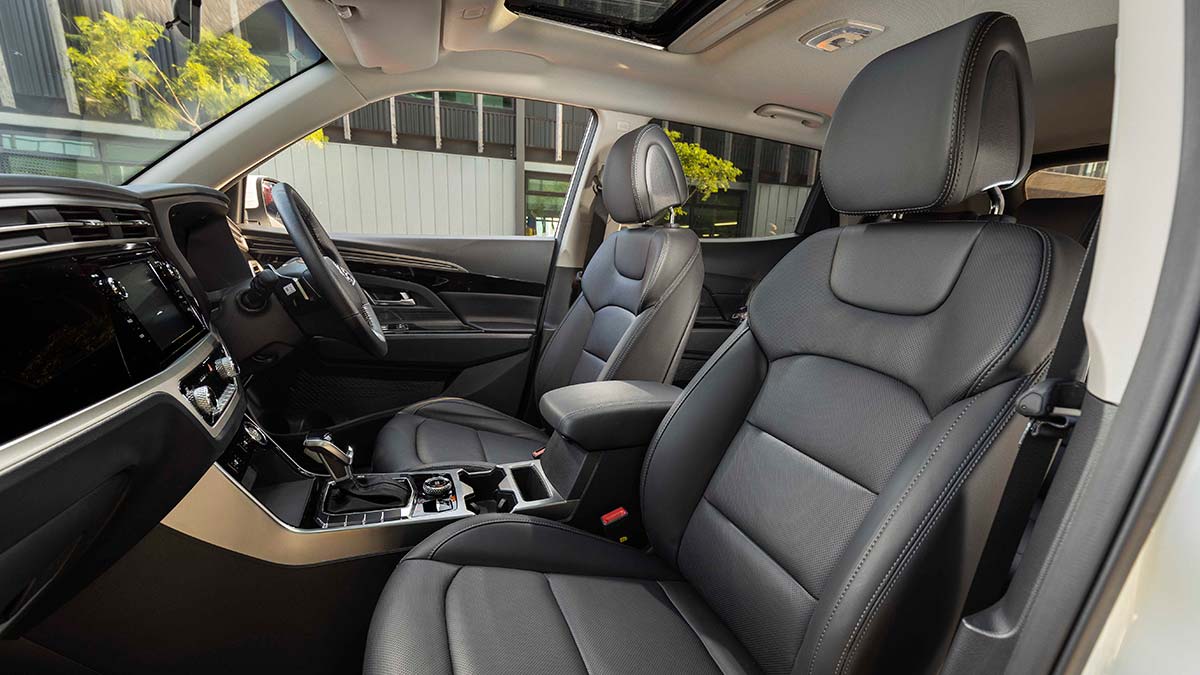The Foton Tunland joins Australia's dual-cab ute market as an affordable mild-hybrid diesel under $50,000, offering strong capability against tough competition.
SsangYong Korando Ultimate 2020 road test review
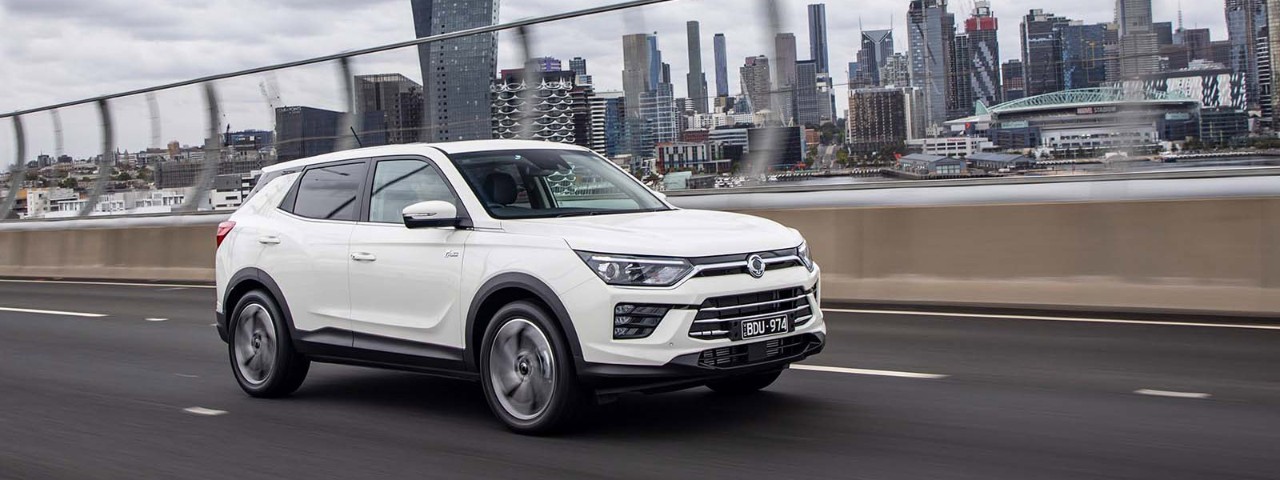
SsangYong’s new Korando SUV is an impressive package at a hard-to-beat price.
South Korean auto-maker SsangYong has had a busy couple of years. It re-entered the Australian market in 2018 after a brief hiatus, offering a line-up of all-new models. Then it was reported in June this year that its parent company, Indian giant Mahindra & Mahindra, wanted to sell the brand after it recorded consecutive quarterly operating losses and sluggish global sales.
The uncertainty has put a question mark over the brand’s future, but SsangYong’s local arm says it is committed to the Australian market and is strengthening its position by increasing sales and expanding its dealer network with the support of its parent company. Mahindra is looking for another investor and according to a local spokesperson is currently in discussion with potential investors.
Despite its sticky corporate situation, SsangYong has rolled out some impressive products in the past couple of years – notably the Musso pick-up. Late last year SsangYong launched the all-new Korando medium SUV that is charged with accelerating sales down under.
Thumbs up
Impressive dynamics and ride, appealing interior, huge boot, compelling value equation.
Thumbs down
Average infotainment system, C-pillar creates big blind spot, missing sat-nav and digital radio.
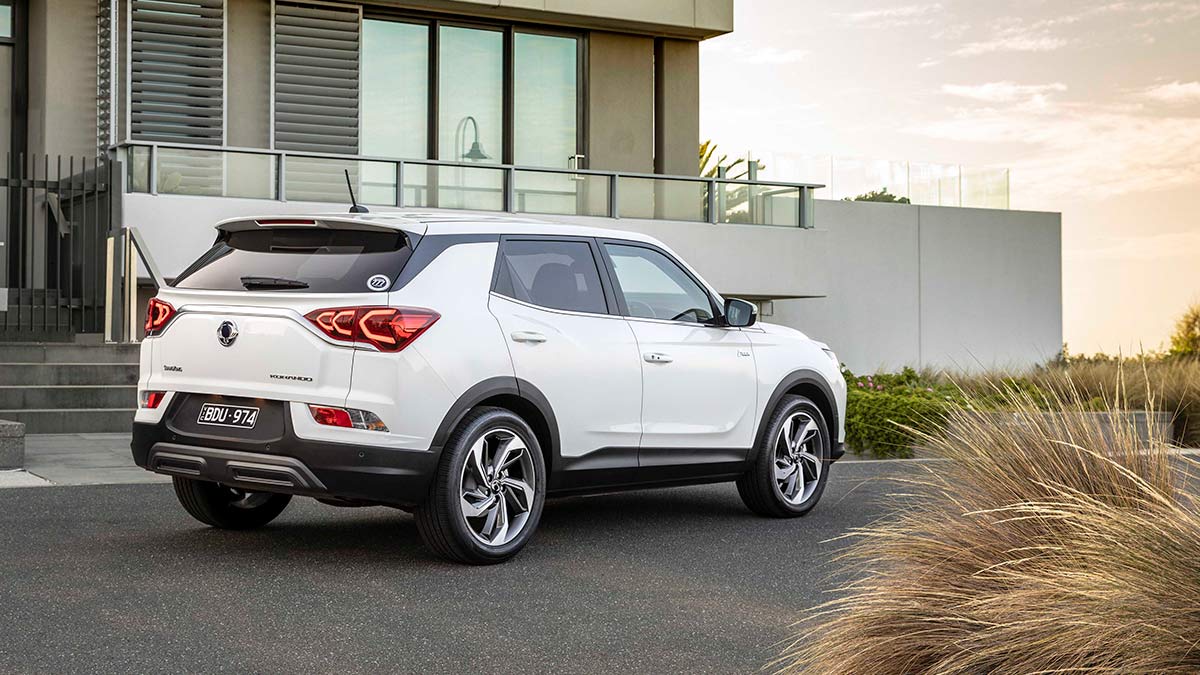
Price and positioning
The aggressively priced Korando ranges from $26,990 driveaway for the base EX to $39,990 for the Ultimate diesel. Most medium SUV rivals like the Honda CR-V, Hyundai Tucson, Mazda CX-5, Toyota RAV4 and MG HS start from around $30k before on-road costs.
The value equation is hard to ignore with the Korando, particularly in the $36,990 driveaway Ultimate petrol tested here. The standard equipment list is extensive and includes most of the latest tech features you’d expect, although DAB digital radio and satellite navigation are glaring omissions for the flagship variant.
Safety first
Safety specifications (see table below) are impressive and on par with many of its more established rivals. The five-star ANCAP-rated SUV’s active safety systems are up there with the best in the segment. The adaptive cruise maintained the set speed and distance, and the lane-keeping aid was seamless.
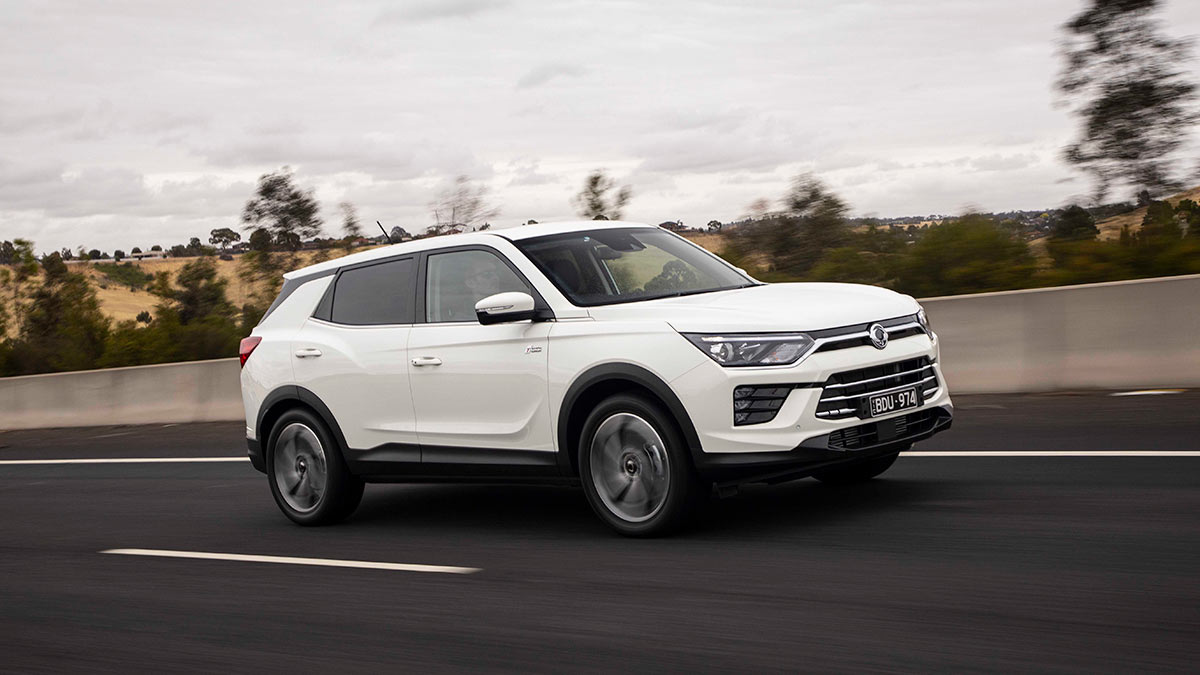
The Korando’s dimensions place it somewhere between a Hyundai Tucson and a Toyota RAV4. It has a spacious and versatile cabin with ample storage, including a couple of nooks for phones, decent-sized cup holders, a big central bin, massive glovebox and bottle holders with extra space in the doors.
Up front the seats are comfortable with good side support, although more thigh support would be welcome, as would electrical seat adjustment.
The dash has an appealing layout with Porsche-esque air vents integrated into a horizontal line that extends to the doors. Gloss black plastics and brushed aluminium add to the semi-premium look.
SsangYong’s infotainment system is a big step behind its rivals. The home screen is confusing and the menu layout isn’t intuitive. The missing sat-nav and digital radio don’t help. The fully digital instrument cluster is well executed for the most part, but some of the screen icons are small and hard to make out.
The Korando’s massive C-pillar behind the rear-seat window is completely blacked out, creating a significant blind spot. You must rely on the camera, sensors and the rear cross-traffic alert if reversing from a perpendicular car park. The reversing camera sometimes catches glare in direct sunlight which affects the display.
Occupants in the spacious second row have plenty of leg room and space across the pew but miss out on air vents or USB ports. It does, however, have a 12-volt outlet, map pockets in the seat backs and decent bottle storage. The high window line means small kids will struggle to see out.
The big boot can swallow 551 litres of cargo, increasing to 1248 litres with the second row stowed. This is better than rivals like the Hyundai Tucson (488 litres). The boot isn’t particularly long, but it is deep, so heavy items need to be lifted up and over the tailgate lip rather than sliding in flat. It has a tyre repair kit instead of a full-size spare wheel.
On the road
Powering the Korando is a 1.5-litre turbo-charged petrol engine delivering 120kW/280Nm – similar outputs to the turbo Tucson (130kW/265Nm) and Honda CR-V (140kW/240Nm). Acceleration is decent from a standing start, and while there is a hint of turbo lag, it picks up the pace quickly, proving that it’s no slouch. It’s not as responsive as the Mazda CX-5 2.5-litre turbo and loses some momentum on steep ascents. The six-speed automatic by Japanese transmission specialist Aisin is excellent, producing smooth shifts and driving the front wheels only.
The 10.7-metre turning circle is tighter than some rivals and makes manoeuvring in tight streets easy. Aside from a hint of wind noise, the cabin is well insulated.
Dynamically, the Korando performs well, with the McPherson-strut front and multi-link rear suspension setup ensuring it remains balanced in tight bends, with little body roll. It trails the CX-5 and Subaru Forester in this area but it’s hardly embarrassed. Sport mode firms up the steering and ups throttle response, increasing the fun factor.
Some light wheel spin was detected accelerating out of a corner, but the Korando remained composed on gravel. The ride is comfortable, soaking up lumps and bumps without fuss. Steering is weighted on the heavier side and feels a little dull off centre.
SsangYong’s official fuel figure is 7.7L/100km and we recorded 10.7L/100km.
|
Pricing |
List price: $36,990 driveaway. |
|---|---|
|
Drivetrain |
1.5-litre four-cylinder turbocharged petrol engine, six-speed automatic transmission, front-wheel drive. |
|
Fuel |
95 RON petrol, 47-litre tank. |
|
Standard safety |
Five-star ANCAP safety rating, seven airbags, autonomous emergency braking, lane-keep assist, forward-collision warning, lane-departure warning, blind-spot detection, adaptive cruise control, lane-centre following assist. |
|
Standard features |
Eight-inch touchscreen, Apple CarPlay/Android Auto, six-speaker audio, heated front/rear leather seats and cooled front seats, heated leather steering wheel, dual-zone climate control, full-colour 10.25-inch LCD instrument cluster, projector levelling headlights. |
|
Warranty |
Seven-year/unlimited-kilometre warranty. Seven-year capped-price servicing plan. Service intervals every 15,000 kilometres or 12 months. |
